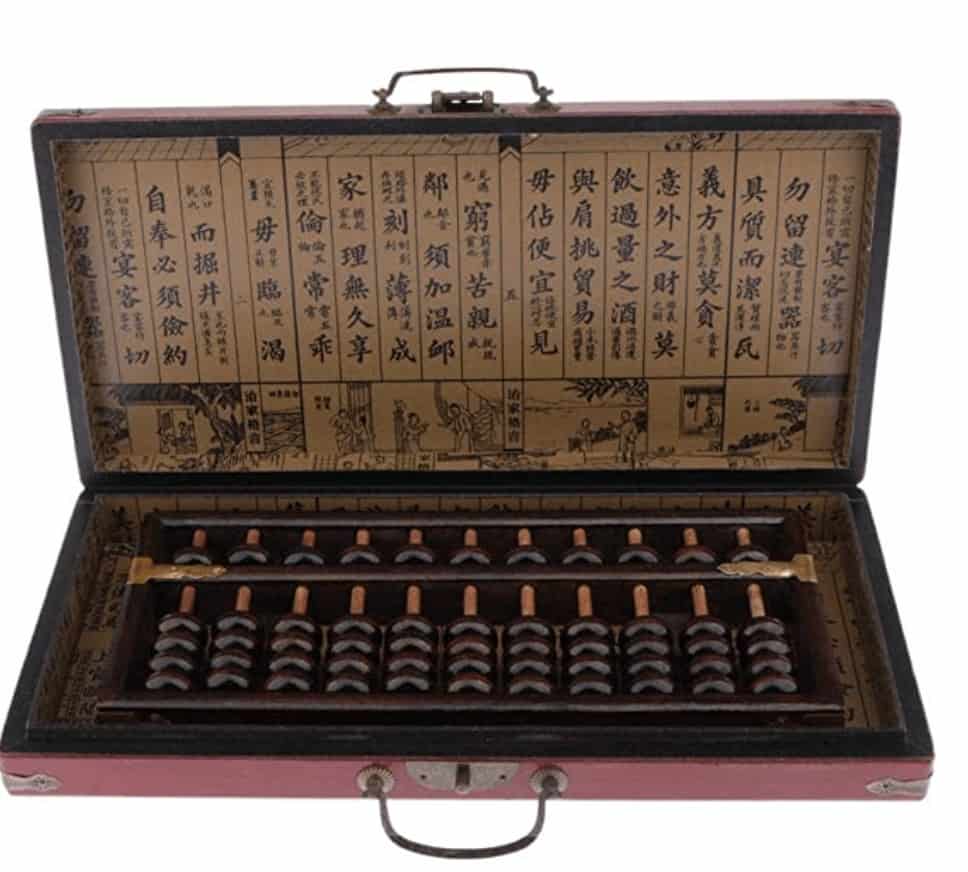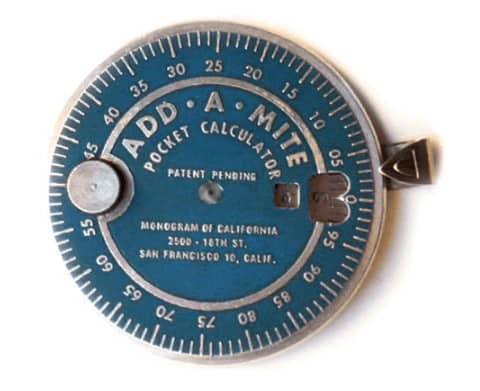Key Points About Add-A-Mite
- The design of Add-A-Mite is very similar to Webb Adder.
- This calculator is made from aluminum, iron, and brass.
- This pocket calculator was manufactured by the company Monogram of California
When humans first began to grasp the concept of numbers, at least in terms of quantities, they used their fingers and toes to count. Of course, this method was extremely limiting and grossly inefficient.
Around 1200 C.E., the Chinese invented a device called Suan-Pan, which we know as the abacus. This calculation tool used wooden “counters” which slid along metal rods or grooves. By that point in history, humans’ mathematical skills had advanced considerably, on top of addition and subtraction, the abacus could be used for multiplication and division and even calculating roots.
Quick Facts
- Created
- The early 1950s
- Creator
- Monogram of California
- Original Use
- Originally used to add and subtract US dollars and cents.
- Cost
- $25
While the abacus is still in use, calculation technology has drastically evolved over the years, with multiple calculating devices introduced for commercial use. One such calculating device is the Add-A-Mite pocket calculator.

Add-A-Mite History
Manufactured and made commercially available in the early 1950s, the Add-A-Mite mechanical pocket calculator is made of iron, aluminum, and brass and was initially used for adding and subtracting US dollars and cents. The Add-A-Mite pocket adder was manufactured by Monogram of California in San Francisco.
Featuring a simple, yet elegant design using concentric discs. Shoppers used the Add-A-Mite to keep a running tally of purchases while shopping, and it could be used for subtraction as well.
In addition to being a calculating machine, Add-A-Mite doubles as a pocket toy.
Add-a-Mite: How It Worked

This calculating device features a relatively straightforward working principle: the cursor on the right is depressed and dragged to the number you wish to add, 0 to 99. When released, the cursor engages a gear tooth on the back of the disc. Also, if dragged clockwise back to the 0 positions, your number is added to the result.
Crossing from 99 to 00 causes an automatic carry into the hundreds window, allowing sums up to $25.00. Subtraction works similarly by starting from zero and dragging counterclockwise to the desired number.
Add-a-Mite: Historical Significance
Although made by the company, Monogram of California, the construction of the Add-A-Mite pocket calculator was not very successful since the small numbers make it difficult to read, and there is no fixing mechanism, not even at zero, so the setting cent is almost analogous and thus quite prone to error.
The inventor, Sahn K. Lowe, served as a radio technician during World War I, as an employee of the Marconi Wireless Company of America and of the Mutual Telephone Company. In addition to the Add-A-Mite pocket calculator, Lowe invented the “Lo-Lite” system, which improved safety for night driving; a disposable paper bags for vacuum cleaners; the E-Z Out Weeder; and a machine for making herbal pills.
Lowe filed a patent for his pocket calculator in 1950 and it was granted in 1953. The Add-A-Mite was available for a short time during 1951 with the words “Patent Pending” printed on them instead of a patent number. They retailed for $2.00.





